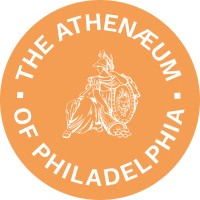
Athenaeum of Philadelphia
Established in 1814 as a subscription library, the Athenaeum of Philadelphia is now a library and museum, with a lending collection for members plus research and museum collections open to the public. Housed in a National Historic Landmark building, the Athenaeum includes a collection of paintings, sculpture, and decorative arts primarily from the mid-19th century. Its gallery often features its own collections, but it also reaches out to contemporary arts. The Athenaeum is open 9 am to 7 pm on Mondays; 9 am to 5 pm Tuesday, Thursday, and Friday, 10 am to 5 pm on Wednesdays; and Saturdays from 10 am to 3 pm. The Athenaeum also features an active archival scanning facility, designed to scan archival and precious materials in a safe environment.






